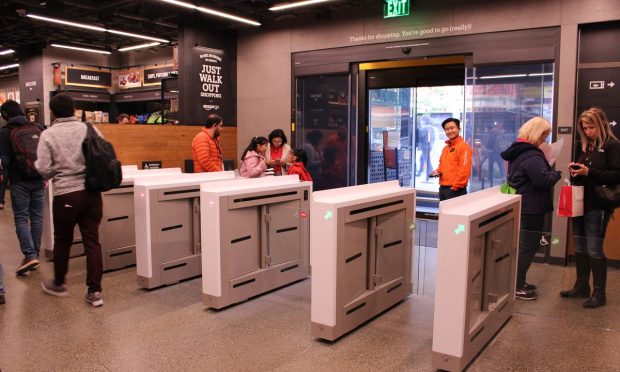Frictionless Checkout Put Through The Paces On Road To Mainstream EU Adoption

Looking to deploy the next generation of retail technology, grocers are turning to computer vision technology, a type of artificial intelligence (AI) which enables computers to extract relevant information from digital images, to satisfy shoppers’ growing demand for a more seamless checkout at the grocery store.
See more: AI-Powered Autonomous Stores Usher in Next-Gen Retail for European Shoppers
Without the need to scan anything, the technology uses cameras and sensors to detect what shoppers have picked up and automatically charge them as they leave the store.
And as the concept gathers steam, a handful of players providing computer vision technology to supermarkets are emerging as leaders in the field.
Perhaps the most well-known example, Amazon was one of the first companies to bring the technology to market with its “Just Walk Out” store in the U.S. and U.K.
As well as developing frictionless checkout systems for its own Amazon Fresh stores, the firm has also partnered with the U.K. supermarket chain Sainsbury’s to fit the technology in one of its London locations.
In mainland Europe, however, Amazon does not have the monopoly — other companies have jumped into the ring vying for a slice of the pie.
Israeli startup Trigo, for example, has positioned itself to become a dominant player in the space, with its computer vision system StoreOS™ already deployed in ALDI, REWE, and Netto stores in the Netherlands and Germany, as well as by Tesco in the U.K., Shufersal in Israel and Wakefern Food Corp in the U.S.
And now, thanks to a $100 million investment the firm recently secured, Trigo is set to further develop its product and enter new markets.
Related news: Trigo Raises $100M as Investors See Room for Improvement in Cashierless Checkout
Roadblocks to Mainstream Adoption
Unlike Amazon’s system, Trigo’s version of frictionless checkout doesn’t require shoppers to identify themselves in any way. The system does not use facial recognition or any other biometric identifiers and only tracks shoppers as digital avatars.
This difference may prove critical in the context of a raging debate over the role of computer vision in public and the potential consequences for consumers’ privacy. After all, if the technology is to go mainstream any time soon, consumers’ concerns surrounding privacy and surveillance will need to be taken seriously.
Related: EU Parliament Discusses AI Act With Agreement in Sight
What’s more, although Trigo’s latest funding round underscores investor and European supermarkets’ interest in using computer vision to enhance in-store shopping experiences, the technology is still in its early stages and has yet to prove its viability at scale.
There’s also a hefty price tag to consider, as Amazon recently had to put a planned U.K.-wide Just Walk Out expansion on ice over concerns about the high cost of kitting out each new location.
This means that bringing the cost of installing the necessary sensors for computer vision systems to work will be an important step if the technology is to gain mainstream acceptance outside of a few high-footfall inner-city locations.
For all PYMNTS EMEA coverage, subscribe to the daily EMEA Newsletter
